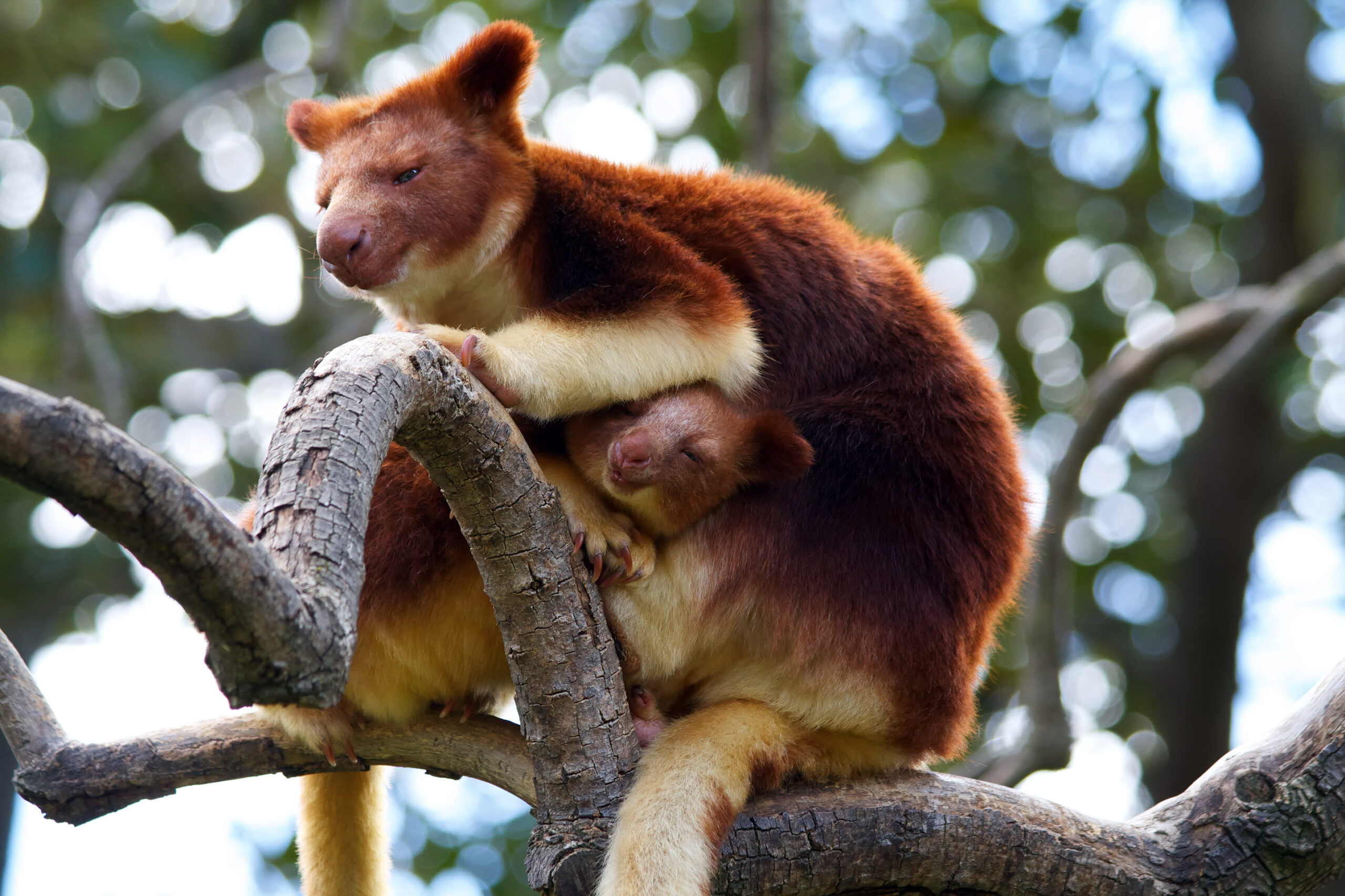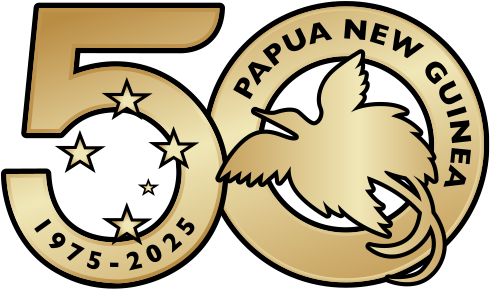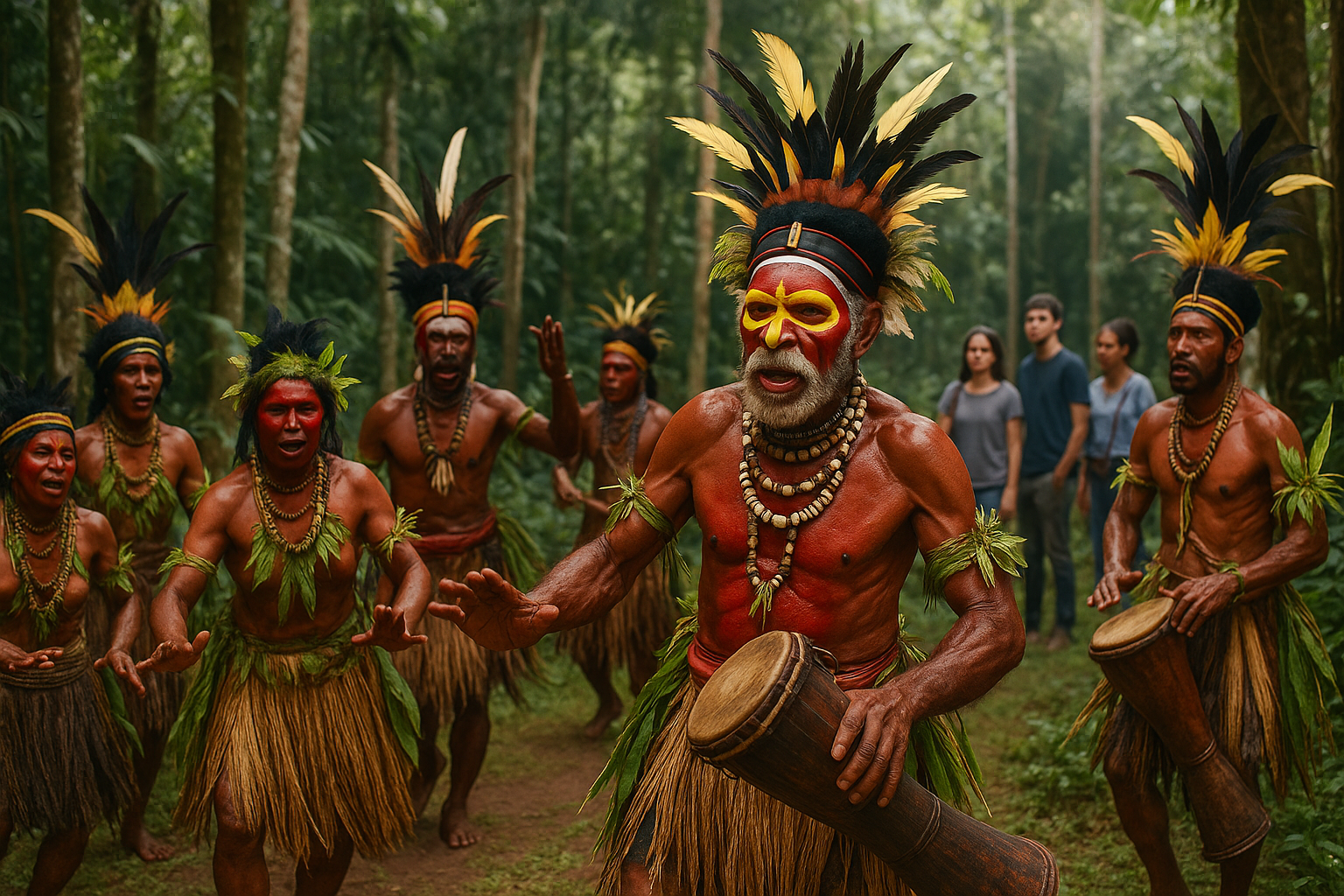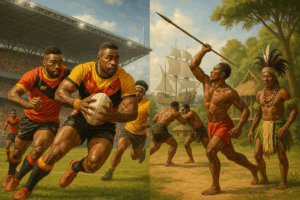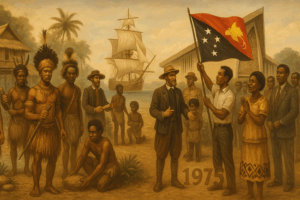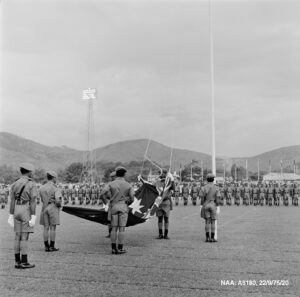Papua New Guinea is home to more than 800 languages and many different cultures and traditions. This diversity is a source of pride, shaping how people live, celebrate, and connect.
Traditions here are not simply remembered, they are practised, taught, and shared throughout generations. From tribal ceremonies to large cultural shows, communities come together to honour their heritage. While modern changes are part of daily life, values like respect for ancestry, unity, and connection to the land remain strong.
Traditional Ceremonies and Festivals Across Provinces
Festivals in Papua New Guinea are more than events on a calendar. They are moments when the country’s cultural heart is on full display, with communities travelling long distances to take part. These gatherings preserve languages, skills, and stories, while offering visitors an open invitation to see the country’s diversity in one place.
Goroka Show – Eastern Highlands
The Goroka Show is one of the best-known cultural gatherings in the country. Tribes from across the Highlands come together, wearing headdresses decorated with feathers some of which belong to the bird-of-paradise, cuscus fur and shells. Their songs and dances tell stories passed down for generations.
Mount Hagen Cultural Show – Western Highlands
First held in the 1960s to promote unity among Highlands tribes, the Mount Hagen Cultural Show is now one of Papua New Guinea’s largest celebrations. Performers showcase the distinct music, movement, and dress of their tribe, from bold warrior dances to rhythmic group chants.
Hiri Moale Festival – National Capital District (Port Moresby)
Held in Port Moresby, the Hiri Moale Festival honours the Motuan people’s historic lagatoi trading voyages. The event features canoe races, cultural performances, and the Hiri Queen pageant, which celebrates knowledge of Motuan history and customs. It is a living link between the past and present.
National Mask & Warwagira Festival – East New Britain
This festival celebrates the mask-making traditions of the Tolai, Pomio, and Baining peoples. Masked dancers perform ceremonies that once marked significant stages of life, each mask carrying its own meaning and identity.
Yam Festival – Milne Bay (Trobriand Islands)
The Yam Festival marks the harvest season and reflects the cultural importance of yam cultivation. Ceremonial exchanges, dances, and decorative displays highlight its role in tradition, status, and community life.
Art, Music and Dance Traditions
Across Papua New Guinea, art, music, and dance remain central to cultural life. They are not only creative expressions but also important ways of recording history, teaching values, and strengthening community identity.
Art takes many forms, from bark paintings and intricate wood carvings to clay pottery and bilum weaving. Each style reflects the resources, skills, and stories of its region. In the Highlands, bright patterns and bold designs often tell clan histories. Along the Sepik River, carved figures and decorated masks play a role in ceremonies and storytelling.
Music is often built around the beat of the kundu drum, supported by bamboo flutes, panpipes, and other locally made instruments. Songs can be celebratory, spiritual, or commemorative, and are passed down through generations.
Dance is a visible and dynamic part of community life. From the fire dances of the Baining people to courtship performances in the Islands, movements are deliberate and meaningful. Each dance is shaped by the history and traditions of the community it comes from.
Unique Cultural Practices from Different Regions
Every province in Papua New Guinea has traditions that make it distinct. Many of these practices are closely tied to the land, community relationships, and social structures.
In the Sepik River region, crocodile scarification marks the passage from boyhood to manhood. The raised patterns on the skin symbolise strength and connection to the river’s most respected creature.
In Enga Province, bride price ceremonies remain an important part of marriage customs. Families present gifts, often including pigs, cash, and traditional goods, in a public exchange that formalises the union and strengthens ties between clans.
On the Trobriand Islands, the yam exchange is both an agricultural and social tradition. The size and quality of a family’s yam harvest can influence their standing within the community.
In Milne Bay, canoe racing has been a celebrated tradition for generations. Races are held during festivals and other community gatherings, combining craftsmanship, skill, and friendly rivalry.
Preserving Culture While Embracing Modernity
Papua New Guinea’s traditions continue to evolve while staying rooted in their origins. Elders play a vital role in passing on knowledge through storytelling, ceremonies, and hands-on teaching. Skills such as weaving, carving, and traditional music are often taught within families and reinforced at community events.
Schools and cultural centres also contribute to preservation, introducing younger generations to local history, languages, and customs. Annual festivals serve as living classrooms, where children see and take part in the practices that define their communities.
Tourism and technology are creating new opportunities to share culture more widely. Performers travel abroad to represent their heritage, and digital platforms are being used to document dances, songs, and oral histories. These efforts help maintain traditions while allowing them to adapt to changing times.
Celebrating a Living Heritage
Papua New Guinea’s culture is not a relic of the past; it is a living part of everyday life. From the Highlands to the Islands, communities continue to honour their heritage while finding new ways to share it with the world.
Whether through festivals, art, music, or unique tribal customs, these traditions strengthen community ties and remind us of the values that connect generations.
Discover more stories, explore upcoming events, and see how you can be part of celebrating Papua New Guinea’s living heritage at PNG50.
FAQs
1. Which months are best for experiencing Papua New Guinea’s cultural festivals?
Most major festivals take place between August and October, coinciding with the dry season. This is when travel is easier and events such as the Goroka Show and Mount Hagen Cultural Show are held.
2. Are cultural practices the same across all provinces?
No. Each province has its own distinct customs, shaped by language, environment, and local history. While there are similarities, traditions are highly specific to each clan/tribe/village and or district.
3. How are cultural skills passed down in Papua New Guinea?
Skills are often taught within families and reinforced through community participation in ceremonies, craft-making, and music. In some areas, cultural centres and schools also run workshops.
4. Is photography allowed at cultural events?
Photography is generally allowed, but it is respectful to ask permission first, especially if people are in ceremonial dress or taking part in a sacred activity.
butterfly
fauna
flora
nature
